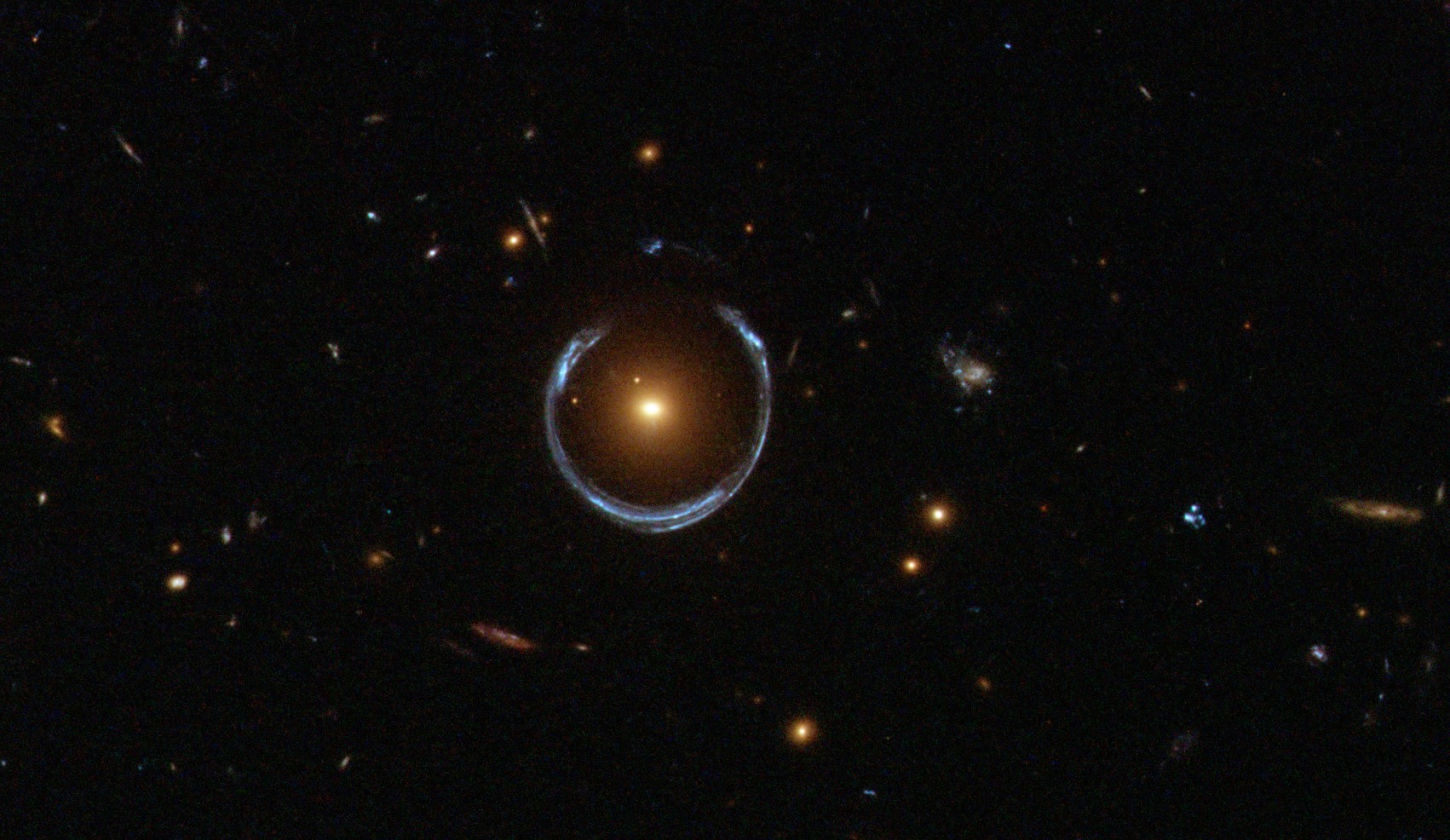
Einstein Ring LRG 3-757
This interesting galaxy imaged by NASA’s Hubble Space Telescope is one of a group of galaxies called Luminous Red Galaxies. It has an unusually large mass some ten times the mass of the Milky Way. However, it’s actually the blue horseshoe shape that circumscribes the red galaxy that is the real prize in this image. This blue horseshoe is a distant galaxy magnified and distorted by the strong gravitational pull of the massive foreground Luminous Red Galaxy. Called an Einstein Ring, this lensed galaxy required the exact alignment of the foreground and background galaxies, making this object’s nickname “the Cosmic Horseshoe” particularly apt. The Cosmic Horseshoe is one of the best examples of an Einstein Ring. It also gives us a tantalizing view of the early Universe: the blue galaxy’s redshift is approximately 2.4. This means we see it as it was about 3 billion years after the Big Bang. The universe is now 13.7 billion years old. Astronomers first discovered the Cosmic Horseshoe in 2007 using data from the Sloan Digital Sky Survey. But this Hubble visible and infrared light image, taken with the Wide Field Camera 3, offers a much more detailed view of this fascinating object.
